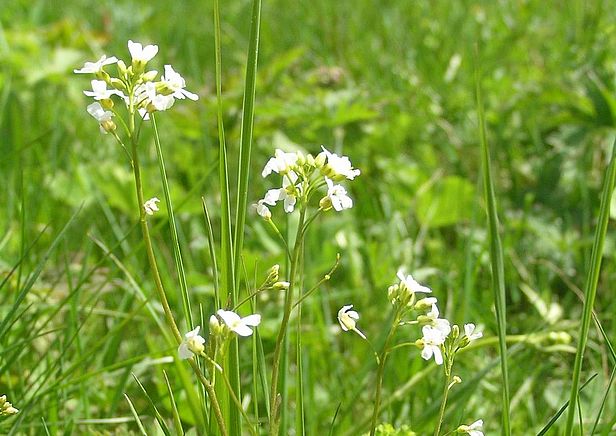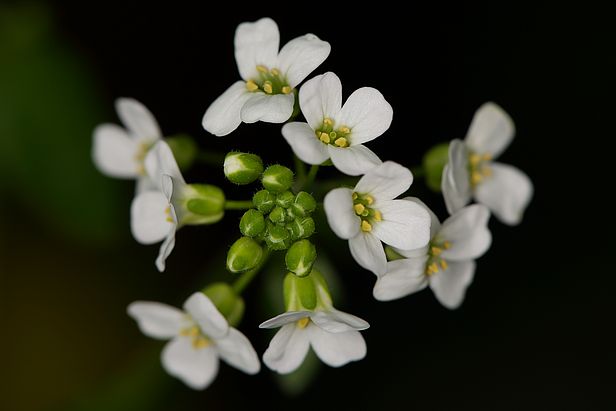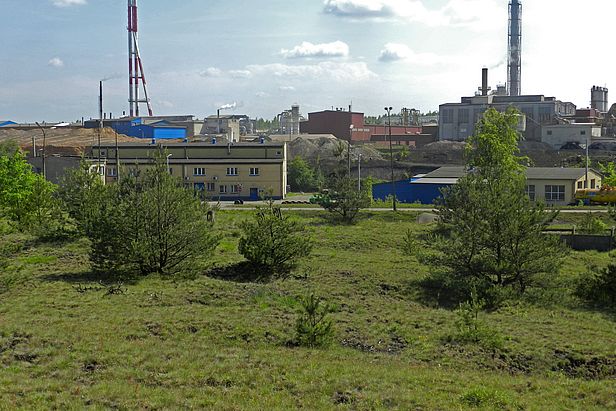13.12.2018 | News WSL
Lead, zinc, cadmium: What makes people, animals and most plants seriously ill is of little concern to thale cress. Because it has adapted genetically in the course of evolution, it can grow on soils contaminated with heavy metals. This was demonstrated by WSL researchers using plants from locations with different levels of contamination.
The Polish Olkusz region, which is home to one of the largest lead-zinc ore deposits in the world and a correspondingly large number of mines, holds a sad record: it is home to some of the most contaminated soils in Europe. The average concentrations of cadmium, zinc and lead can be five to ten times higher than the maximum permissible value in Switzerland. Plants grow poorly here because the toxins slow down the biological activity in the soil and hinder important processes in the plant cells.
Thale cress (Arabidopsis halleri), however, thrives splendidly in this region. In the course of evolution, it has acquired a particularly effective handling of environmental toxins. This was demonstrated in a genetic study conducted by researchers from the Swiss Federal Institute for Forest, Snow and Landscape Research WSL together with colleagues from the Polish Academy of Sciences (PAN) in Krakow. They rely on a Polish field experiment in which cress plants from four locations - two contaminated and two unpolluted - were examined.
The WSL researchers Christian Sailer and Christian Rellstab investigated the entire genomes of plants from the contrasting locations. "We found striking differences at specific sites in the genome between plants from locations with and without heavy metals," said Rellstab. "This is probably due to the fact that this cress species has adapted to heavy metals in the soil through genetic modifications at precisely these sites." The identified genes control the reactions of plants to adverse environmental conditions. One reaction is the transport of metals into specific cell sections, the vacuoles, in which heavy metals and other toxins are stored and thus rendered harmless. Other reactions are part of the repair system that corrects damage to cell components or DNA caused by heavy metals.
Reaction to environmental stress
These results, which were published in the journal Scientific Reports, are important for the remediation of contaminated sites - possibly also in Switzerland. According to the register of contaminated sites, over 30,000 locations covering a total area of 220 square kilometres are contaminated with chemicals and heavy metals, which corresponds to the size of the Canton of Zug. Around 4000 sites are being remediated. Plant cover is one possible way of doing this, either by allowing the vegetation to absorb and retain the heavy metals, or by removing the pollutants through mowing. Although thale cress is too small for this, it is an ideal research object. Not only can it withstand extremely high concentrations of heavy metals, but also absorb large quantities of them from the soil and store them harmlessly in its plant cells. The current study shows that transport genes play a particularly important role in this process. A better understanding of these mechanisms could help breeding particularly resistant plants for soil remediation.
Cleaning soils using plants
"In order to be able to use adapted plants for remediation, we need to know the exact mechanisms of heavy metal adaptation," says plant physiologist Pierre Vollenweider from WSL. The study builds on the WSL researchers' experience with the genome of A. halleri and on previous research projects on the adaptation of plants to heavy metals and other environmental pollutants. The cooperation with the Polish colleagues was initiated by the first Sciex programme, a federal funding programme within the framework of the eastward expansion of the European Community.
Contact ¶
Links and documents ¶
Original publication:
Christian Sailer et al. Transmembrane transport and stress response genes play an important role in adaptation of Arabidopsis halleri to metalliferous soils. Scientific Reports, volume 8, Article number: 16085 (2018). DOI: 10.1038/s41598-018-33938-2
Copyright ¶
WSL and SLF provide image and sound material free of charge for use in the context of press contributions in connection with this media release. The transfer of this material to image, sound and/or video databases and the sale of the material by third parties are not permitted.





